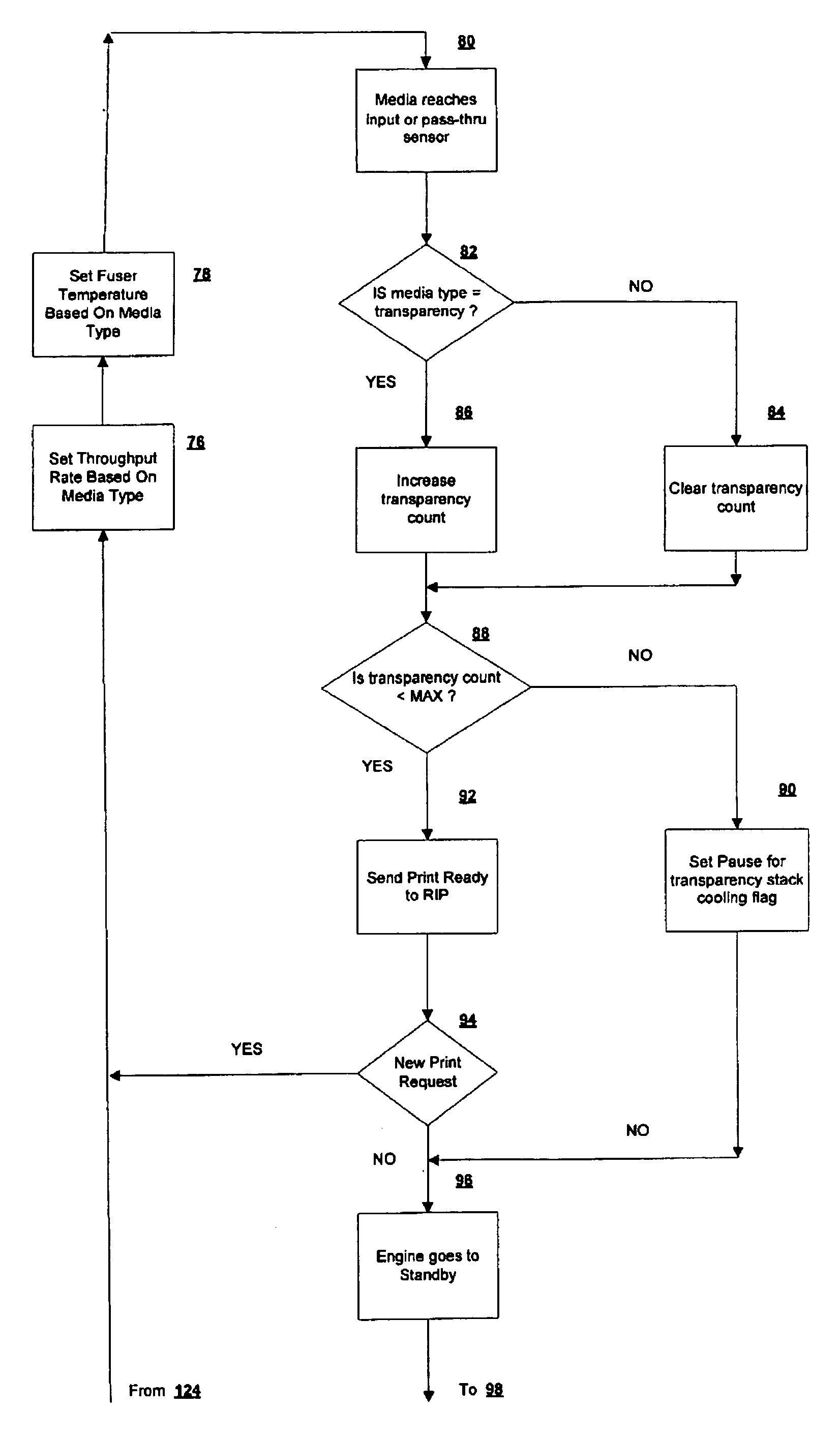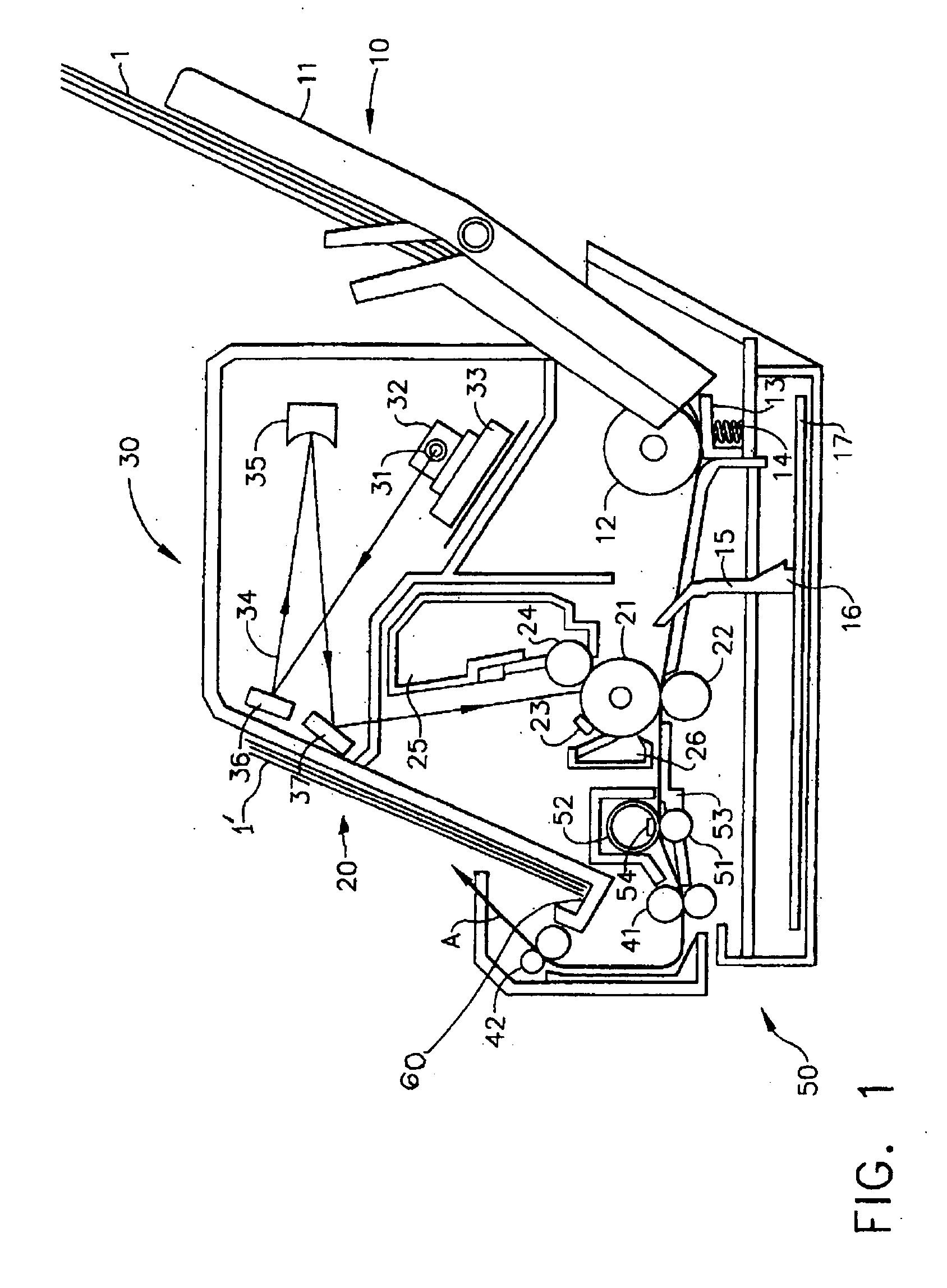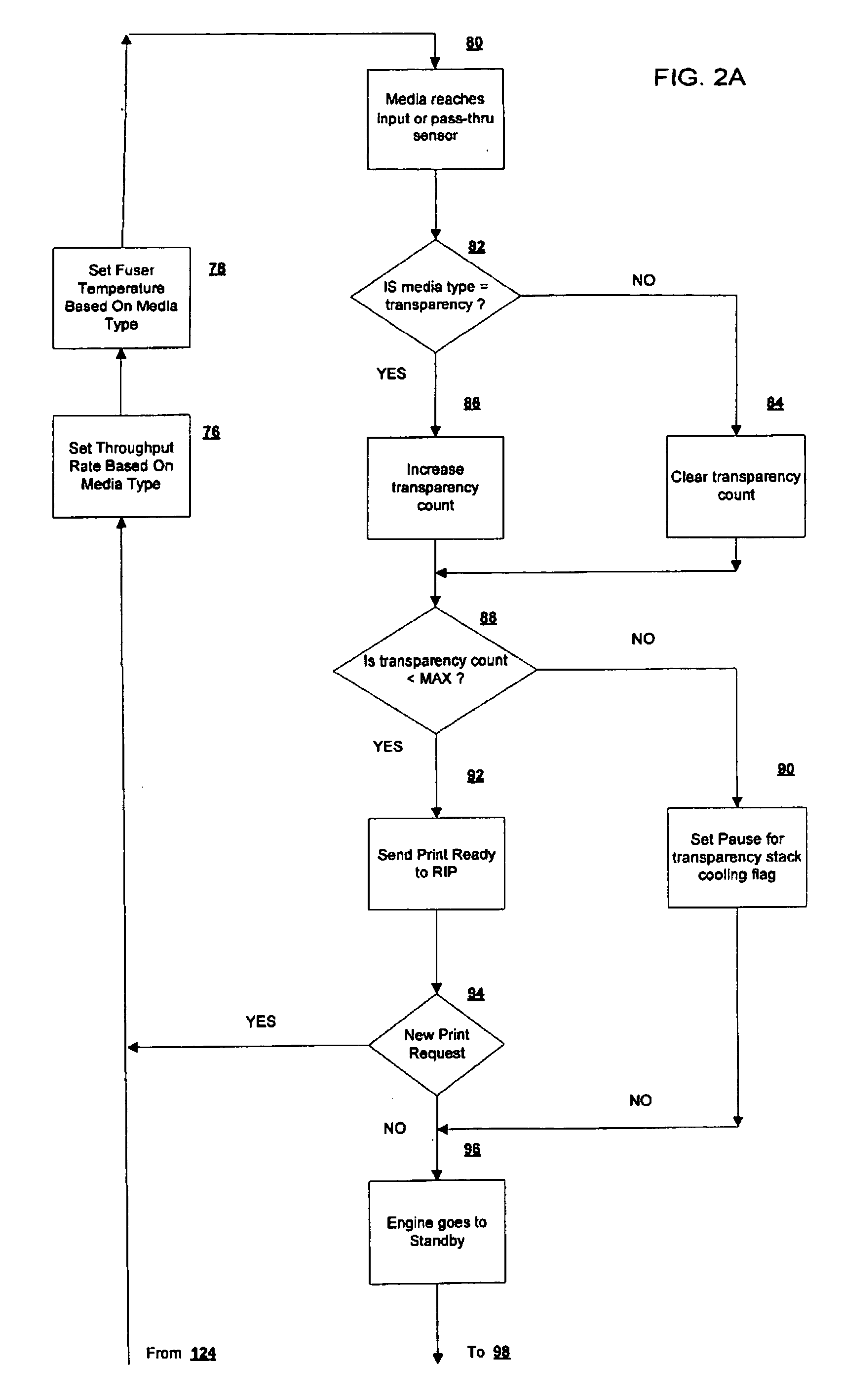Image offset prevention on plastic substrate media
a technology of plastic substrate media and offset prevention, which is applied in the direction of instruments, electrographic process equipment, optics, etc., can solve the problems of image quality, transfer toner becoming “sticky”, and heat energy accumulation in the output bin of the apparatus, so as to prevent “offsetting” and control print quality
- Summary
- Abstract
- Description
- Claims
- Application Information
AI Technical Summary
Benefits of technology
Problems solved by technology
Method used
Image
Examples
Embodiment Construction
[0022] Printing or copying an image onto a substrate such as high thermal capacitance media, such as a transparent resin sheet, is typically accomplished by fixing a loose powder toner using heat onto the surface of the media in an electrophotographic process. In electrophotography, a latent image is created on the surface of an insulating, photoconducting material by selectively exposing an area of the surface to light. A difference in electrostatic density is created between the areas on the surface exposed and those unexposed to the light. The latent electrostatic image is developed into a visible image by electrostatic toners which contain pigment components and thermoplastic components. The toners, which may be liquids or powders, are selectively attracted to the photoconductor's surface, and either exposed or unexposed to light, depending upon the relative electrostatic charges on the surfaces of the photoconductor, the development electrode and the toner. The photoconductor m...
PUM
 Login to View More
Login to View More Abstract
Description
Claims
Application Information
 Login to View More
Login to View More - R&D
- Intellectual Property
- Life Sciences
- Materials
- Tech Scout
- Unparalleled Data Quality
- Higher Quality Content
- 60% Fewer Hallucinations
Browse by: Latest US Patents, China's latest patents, Technical Efficacy Thesaurus, Application Domain, Technology Topic, Popular Technical Reports.
© 2025 PatSnap. All rights reserved.Legal|Privacy policy|Modern Slavery Act Transparency Statement|Sitemap|About US| Contact US: help@patsnap.com



